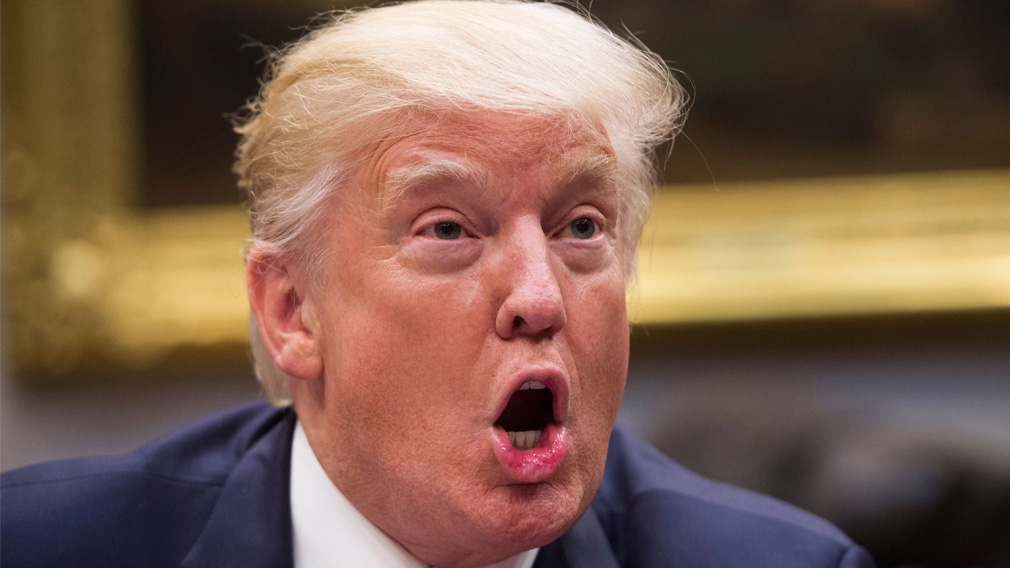Trump centre of (another) debt ceiling drama

Donald Trump, who is facing several challenges including the debt ceiling, meets with congressional leaders about tax reform earlier this month (Getty Images).
Economic policy is difficult to implement at the best of times let alone in the midst of disparate political agendas, natural disasters and escalating geopolitical tensions.
On all fronts, the past month has been a very difficult time for the US. While Hurricanes Harvey and Irma may have dissipated, the situation in North Korea is unresolved and political clouds are growing darker in Washington.
While a clear path for initial financial support for the regions affected by the hurricanes was welcome, the “debt ceiling” – the amount of debt the government can issue and thus how much it can borrow – has re-emerged as a major political issue and the three-month extension negotiated by President Donald Trump and the Democratic leadership has the potential to create a number of political storms in 2018.
First of all, it has created considerable tension between President Trump’s administration and the Republican leadership who were blindsided by the deal. A lack of trust will make negotiations on tax, health and regulation within the Republican party much more difficult.
Should new Republican policy progress to Congress, it will then face even greater opposition, with the Democrats likely to use the new political clout granted to them by President Trump to instead focus Congressional debate on immigration reform.
This policy area has become a Democrat priority following President Trump’s decision to end a temporary protection program for underage illegal immigrants enacted by President Obama.
There is a tight timeline on this policy item versus tax and other regulatory matters, and these tensions within the Republican party and between Republicans and Democrats point to many months of pitched political battles.
With each party having different priorities, a stalemate on all fronts could easily ensue.
While the debt ceiling deal ends on December 15, extraordinary measures will allow the US Treasury to keep the government funded until sometime in the second quarter of 2018. It is only after this time that Congress would have to act to stave off the threat of a government shut-down.
But with many other related complexities, the road ahead for reform is looking particularly troubled.
The one positive that comes from Congress’s ability to extend debate on these key issues past December is that it leaves the Federal Open Market Committee – which sets US official interest rates -- with a clear window to raise interest rates in December without fear of a coincident shock to the economy from Washington.
This option may also hold greater appeal given that the make-up of the FOMC in 2018 has also become considerably less certain, putting at risk their intended gradual normalisation.
Chair Janet Yellen’s position as head of the Committee ends in February and the White House still has a list of six people who might be asked to fill that position (including Chair Yellen). Vice Chair Fischer has announced his decision to resign from the Committee in October 2017 rather than mid-2018. While Randal Quarles will likely be approved by the Senate as a Governor before Vice Chair Fischer leaves, that still leave three vacancies.
A beginning of the “tapering” process – whereby the Fed withdraws stimulus measures – at the September meeting is a given, but arguably is not enough to guard financial stability, particularly given how far risk assets, such as stocks, have extended and owing to the low level of rate hike expectations at a time of full employment.
There is clearly justification for the FOMC to raise the fed funds rate again before year-end to give them time in early 2018 to find their feet without any concern over inflation and/or further exuberance in risks assets and (potentially) housing.
While the outlook is certain to remain uncertain, full employment, strong job growth, an expectation that inflation will rise and the elevated nature of financial markets will see the FOMC continuing to normalise rates back to a “neutral” level.
We see this as 1.875 per cent; the Committee still view it as nearer 3 per cent.


